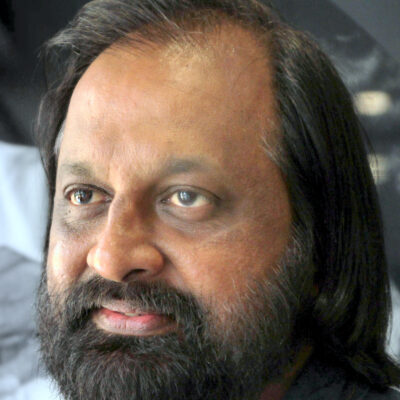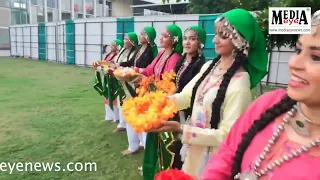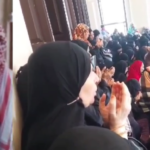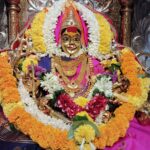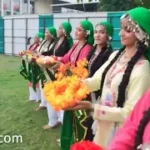Within the world of classical art forms, where customs and traditions frequently sway, there are sometimes mavericks—visionaries who question the established quo and transform the very essence of their medium. One such persona was Padmashree Keezhpadam Kumaran Nair (1916-2007), a renowned figure in the Kathakali dance-drama style that originated in Kerala, India.
Every classical art form is based on a rigid framework of stylistic elements in form and content. The aesthetics of the era in which they were created keeps them going forward through time. As a result, they never engage with the sociocultural discourses of the era, and they are known as condensed art forms.
Classical art forms are always admired for their age. Koodiyattam claims to be 1800, and Kathakali’s history spans over five centuries. The stories of these art genres are primarily found in epics and folklore. The more traditional ones are regarded as the crown jewels of the classical arts.
An artist has a distinct perspective when they realise that shape and content can be redefined based on the values of the moment. Putting this vision, ingenuity, and political consciousness into practice requires a different kind of vision, ingenuity, and political consciousness.
For such an artist, every phase becomes a laboratory. In the realm of Kathakali, Keezhpadam Kumaran Nair is a rebellious figure who, through his superior aesthetics, has revolutionised the character’s approach and content to reflect societal shifts of the day.
Karthaveerarjunavijayam
Before proceeding with the story of Keezhpadam, let us reflect upon Karthaveerarjunavijayam, a popular story in Indian mythology.
Kathakali performances of Karthaveerarjunavijayam are a visual spectacle and a cultural experience that showcases India’s rich artistic heritage. The tale of Karthaveerarjunavijayam unfolds through a series of scenes, with each character meticulously depicted through their attire, makeup, and mannerisms.
Generally, Kathakali typically incorporates stories from Indian epics like the Mahabharata and the Ramayana.
How Keezhpadam depicted a scene from Ramayana
Once the Kathakali performance of Karthaveerarjunavijayam captivated the audience in the arena, a scene was about to unfold. On stage were demon king Ravana and his queen Mandodari, with Keezhpadam in the role of Ravana.
As the story goes on, Mandodari dreams about Ravana hugging Urvashi (the most prominent celestial dancer depicted in Indian mythology), which upsets and causes her to argue with Ravana. Ravana resolves the conflict and reconciles with his wife.
The performance is accompanied by music, as is common in Kathakali. For this moment, the song’s lyrics were “Dasiyakum Urvashi…” Dasi is the word for maid or servant. In the past, actresses portrayed maids as menial workers who washed dishes.
However, in a twist to the tale, Keezhpadam—who played Ravana—portrayed Mandodari as a dancer on this occasion. During the song’s brief duration, he portrayed Mandodari as a devadasi, using dance elements from Bharatnatyam, Mohiniyattam, and Kathak. With this avant-garde depiction, Kathakali Acharya Keezhpadam Kumaran Nair transforms the maid from a domestic helper to a devadasi (God’s servant).
Journey of the legend
Keezhpadam Kumaran Nair’s life and work are as legendary as a film. He studied Kathakali in the aristocratic Kalluvazhichitta style under the renowned master Pattikamthodi Ramunni Menon Ashan. After finishing his studies, the governing committee gave him leadership of the dance department at the esteemed Kerala Kalamandalam Institute.
He took a train to Madras, disappointed that he had been assigned to oversee the Dance segment rather than the Kathakali section. He studied various dance styles there, including Kathak, Manipuri, Thalaprastaram, Kuchupudi, and Bharatanatyam. Later on, he worked as a choreographer in Tamil movies. MG Ramachandran, the future Chief Minister of Tamil Nadu, was among the many famous people he taught dance to in the film industry.
For a while, Keezhpadam was also a Kathakali instructor at the International Kathakali Center in Delhi. After leading the art movement during his more than thirty years of migration, he eventually returned to his home village in Kerala. A person will probably lose their influence on a classical art form, like Kathakali if they abstain from it for a long time.
However, three decades later, he returned to the Kathakali stage in Kerala, where he played the difficult part of Arjuna in “Kalakeyavadha.” With great skill and endurance requirements, this job is considered one of the hardest for an actor. His return was a statement that Kathakali is not a static art form and can be modified in form and substance over time without losing its fundamental qualities.
Keezhpadam’s portrayal of Ashwamedha from Ramayana
To undertake this endeavour, an artist must be wise, logical, imaginative, and perceptive. For example, he told the Ramayana story “Lavanasuravadham,” which describes what happened after Rama left Sita behind.
Lord Rama decides to perform the Ashwamedha ritual. At that time, Sita and her two adolescent children, Luv and Kush, stayed in Valmiki’s ashram. When Ram’s Yagashwam, the horse used in Hindu mythology’s Ashwamedha Yagna (Horse Sacrifice), arrives at the ashram, Luv and Kush capture and tie the animal.
The rule states that defeating the person who captured it is the only way to get the Yagaswa back. The first to oppose them is Rama’s brother, Shatrughan, who loses the battle against Luv and Kush, unaware they are Rama’s offspring. Then Hanuman appears, giving up his abilities and spending some penance in the Himalayas.
Hanuman fails to recognise the children, too. Keezhpadam Kumaran Nair portrays Hanuman in this scene. As Hanuman notices the children, his mind wavers, recalling a crucial incident in his early years when, as Sugreeva’s general, he met Rama and Lakshmana, an event that changed his life forever.
In this moment, he feels echoes of that profound meeting, where destiny intertwined with his fate, shaping the trajectory of his life. Hanuman’s telepathic connection to Rama becomes evident as the play progresses, and he eventually recognises the children.
He uses a metaphor to explain this epiphany to the audience, comparing the rising fountain to the happy tears that Goddess Bhumi sheds when she sees her grandchildren’s abilities.
Next, the children bind Hanuman and present him before their mother, Sita. When she recognises Hanuman, Sita becomes emotional and instructs the children to apologise to him.
Sita then asks Hanuman why he was there, and a dialogue ensues. During this conversation, Hanuman, aware of Rama and Sita’s separation, hesitates to reveal the truth about the Ashvamedha ritual and his mission to retrieve the Yagashwa. Hanuman then shows Sita the Yagashwa through the window, which bears the flag and the inscription, ‘This is the Yagashwa in the Ashwamedha of Lord Rama’.
As a rule, the King cannot perform Ashwamedha alone; he needs the queen beside him. Sita’s anguish is palpable, prompting her to inquire about the queen.
Keezpadam Kumaran Nair’s Hanuman falls silent for a moment before delivering a soliloquy, expressing his anguish at witnessing the unjust treatment Sita endured despite her innocence.
He contemplates the ritual of Rajasuya, which incorporates a golden statue of Sita beside the throne, symbolising her esteemed status as the queen. Reflecting on these injustices, Hanuman’s gesture of compassion, mechanically portraying the hand gesture of the golden statue of Sita, resonates deeply with the audience, evoking profound emotion.
This poignant portrayal by Keezhpadam profoundly moves the hearts of every audience member, leaving many teary-eyed.
Purchased the land where his guru had performed Kathakali
Keezhpadam once purchased 5 cents of land in a paddy field in Malappuram for ten times the prevailing price. Historically, Kathakali performances were held in paddy fields after harvest. This location held significance to him as his guru had performed Kathakali there decades ago. He desired to possess this sacred site, as it had been graced by the dust from his Guru’s feet.
On one occasion, MG Ramachandran passed through Palakkadu and visited the house of his guru, Kumaran Nair. That day, he presented his guru with a National Permit Lorry as a gift.
Such acts are rare miracles in history, exemplifying the profound impact of legendary figures.
Keezhpadam lived in Madras, Delhi, and travelled to major cities before returning to his village, Vellinezhi, in Palakkad, Kerala. There, he immersed himself in meditating solely about Kathakali and reminiscing about his guru. He rarely performed publicly. He remained silent if asked about his fee, preferring not to participate in Kathakali performances under such circumstances. He avoided places where monetary gain was valued over artistic integrity, particularly in the context of Kathakali


